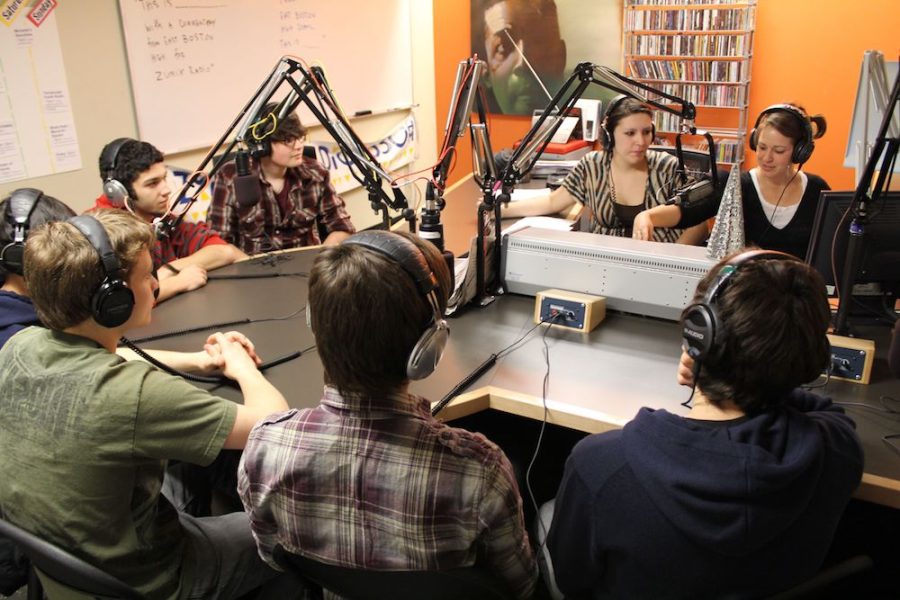
Courtesy Zumix

Courtesy Zumix
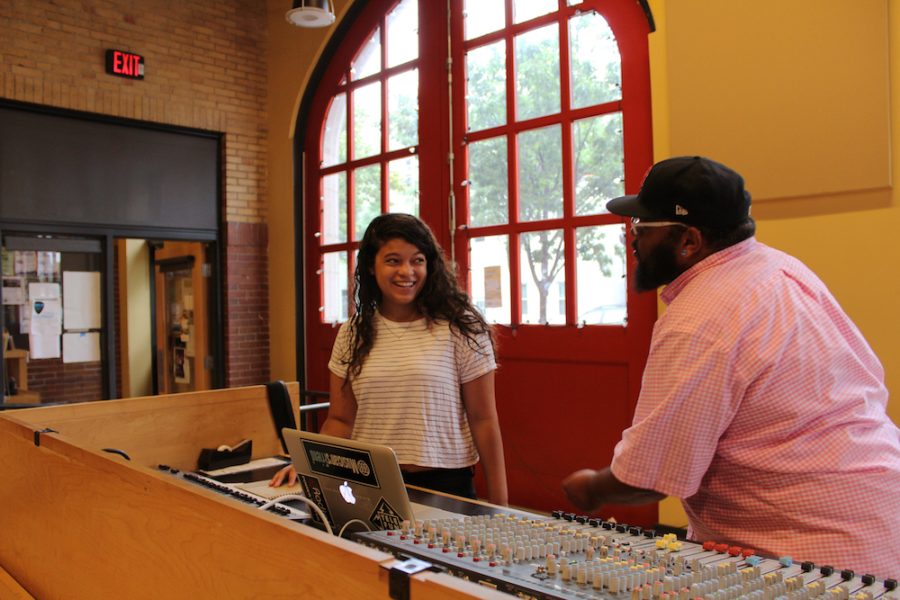
Courtesy Zumix
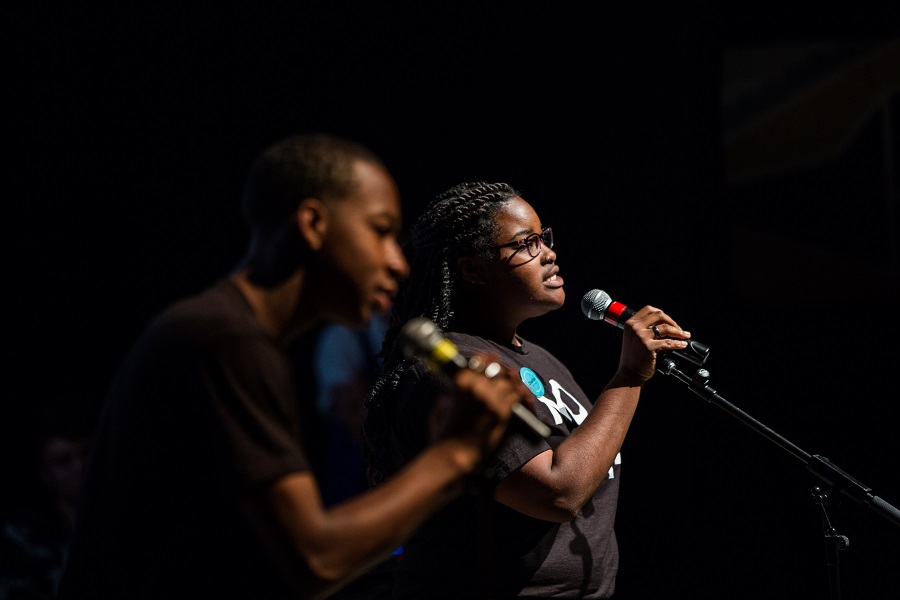
Photo by Kristyn Ulanday
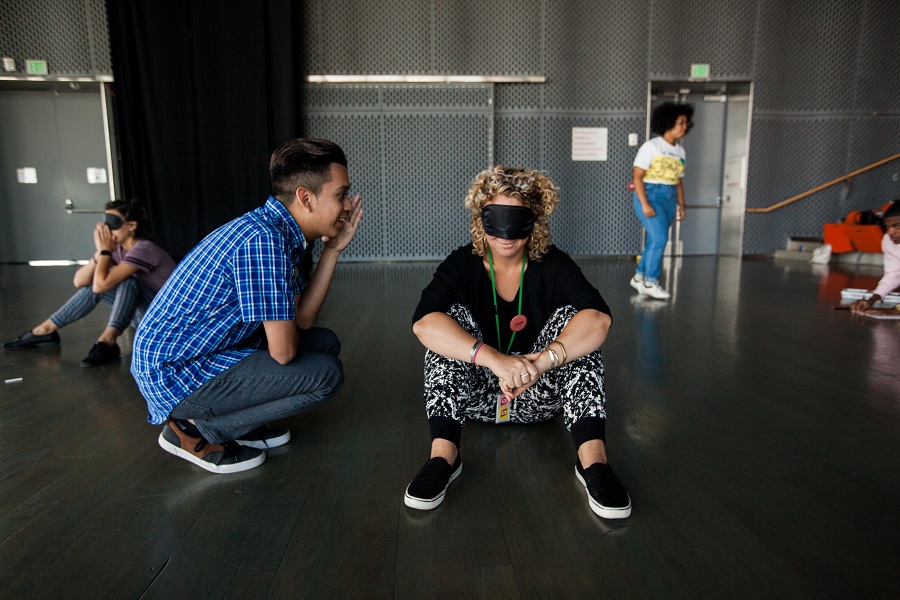
Photo by Kristyn Ulanday
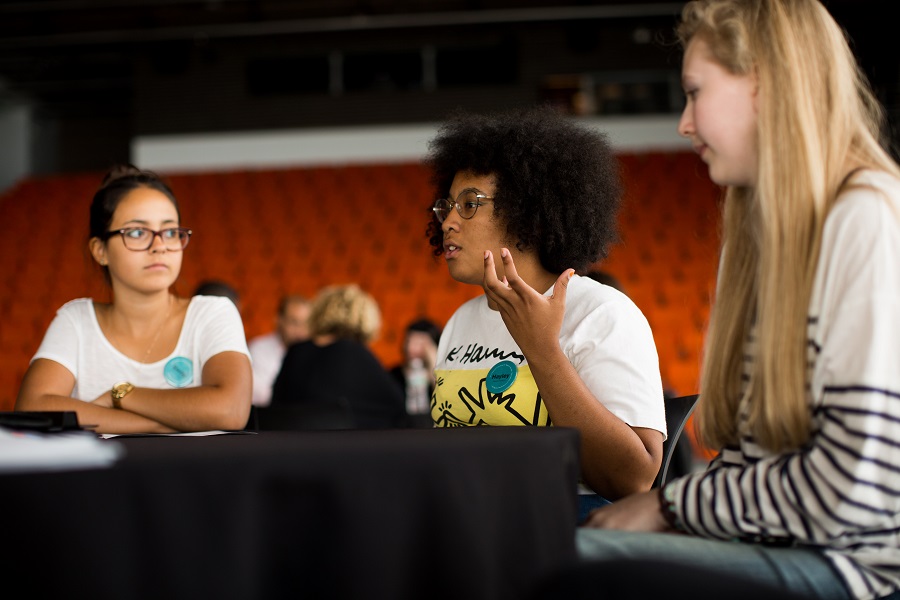
Photo by Kristyn Ulanday
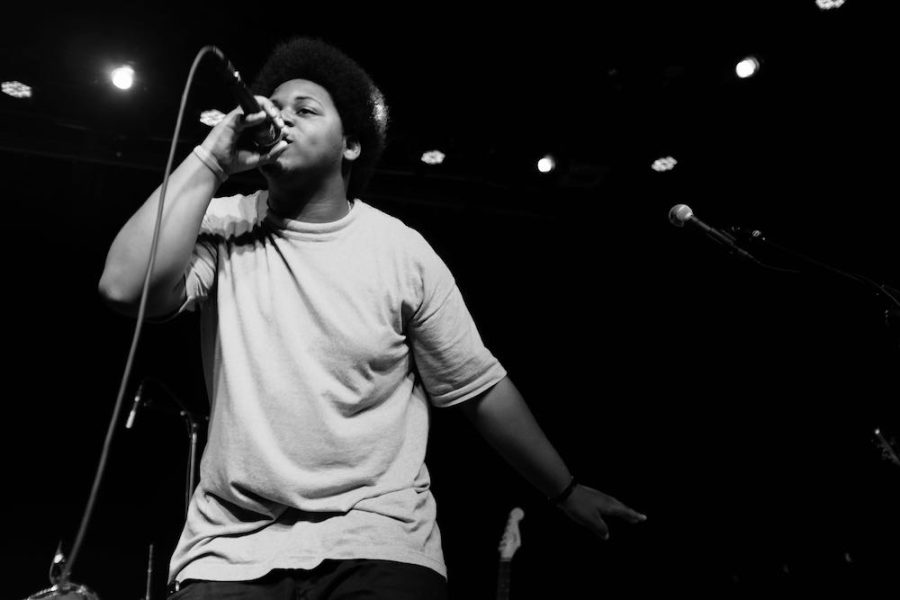
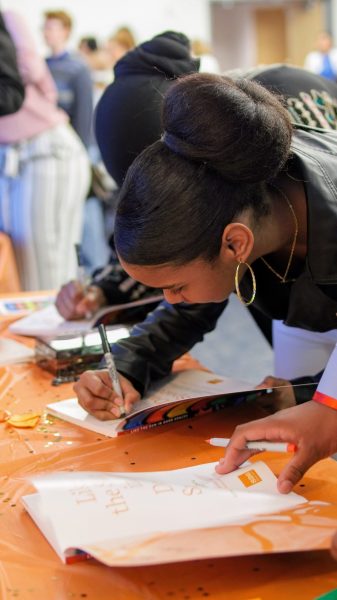
Courtesy 826 Boston

Courtesy Zumix

Courtesy Zumix

Photo by Kristyn Ulanday

Photo by Kristyn Ulanday
Ten years ago, the ICA galvanized a movement for teen arts education with the first-ever national Teen Convening. On November 2–4, 2018, the ICA hosted Building Brave Spaces: Mobilizing Teen Arts Education, an unprecedented gathering to reflect and build upon the knowledge and field-wide progress made in teen arts education over the past decade. This event served as a forum for collaboration and understanding across institutions, generations, and geographies and functioned as a catalyst. Through keynote sessions, workshops, and panels this conference addressed three key areas: what we know about the impact of arts education on teens; innovative teen programs and the leadership required; and how to mobilize a broader field. Access recordings of select sessions below, or all Hub videos here.
In December of 2019, the ICA published Brave: Reimagining Teen Arts Education, a timely compilation of contributions from speakers and teens involved with Building Brave Spaces, its Advisory Group, and artists, researchers, program alumni, and museum professionals from throughout the country. Two essays frame a series of interviews, punctuated by photos from the conference, as well as past Teen Convenings. These contributions shed light on current thinking about arts and education systems from a range of viewpoints and areas of expertise and imagine the different roles youth, artists, and institutions can play in the future. The publication by no means aspires to provide the defining answers to the many questions we have on these important topics. Rather we hope it will serve as a catalyst for continued dialogue, reflection, and action that eradicates the inequitable systems and structures of living and learning that inhibit our world from thriving. Download the publication
Barbara Lee Family Foundation Theater, 3rd floor entrance
Roundtables: Brave is…
ICA, Bank of America Art Lab, 1st floor
Museum Teen Programs: Homes of the Brave? Participants joined Gerald Leavell and Christian Ogando for a roundtable session where they wrestled with questions concerning bravery in museum teen programs, through small and large group dialogue, short interactive activities, and deep reflection (on conditioning).
Where Are They Now? Exploring Long-term Impacts of Teen Programs in Art Museums
ICA, Barbara Lee Family Theater, 2nd floor entrance
Participants joined alums of teen programs who have gone on to become leaders in the field of youth arts education for a discussion about long-term impact and public value of teen programs. In the 1990s Fabrizio Flores participated in the MOCA Apprentice Program at the Los Angeles Museum of Contemporary Art and Calder Zwicky was a member of the Walker Art Center Teen Arts Council. They went on to design and run innovative art programs for teens in museums, schools, and community-based organizations. These practitioners engaged in a reflective conversation about how they were shaped by their own experiences as teens in museums, as well as the kinds of opportunities they create for youth today in a changing cultural landscape.
Cross-Sector Collaboration/Creative Career Pathways for LA’s Opportunity Youth
ICA, Louis I. Kane Board Room, 3rd floor
Creativity is a critical part of the Los Angeles economy, where one in seven jobs is in the creative industries. Who gains access and the necessary preparation to succeed in these work opportunities is of major concern. artworxLA, an LA-based nonprofit arts education organization, received funding from The James Irvine Foundation to conduct a scan that identifies existing programs that re-engage and prepare young people within Los Angeles to participate in the creative economy. This session shared the results of this research — a website tool, “Elevate: Creative Career Pathways for LA’s Opportunities Youth,” that identifies the multi-sector efforts for Los Angeles’ young people who are struggling to connect to education and employment. Participants learned about how this cross-sector approach where institutions and agencies worked together to help young people complete high school, take the next steps in their postsecondary education, and find and retain fulfilling jobs in the creative industry has strengthened and contributed to the local economy and supported LA’s most vulnerable youth.
Introduction to Creative Youth Development: Key Characteristics & the National CYD Movement
District Hall
Creative youth development is a recent term for a longstanding theory of practice that integrates creative skill-building, inquiry, and expression with positive youth development principles, fueling young people’s imaginations and building critical learning and life skills. Young people thrive when they have opportunities to maximize their creative potential. Creative youth development (CYD) programs support young people in developing the personal, social, and intellectual skills that are critical to success in life, school, and work. A growing movement is working to ensure that all young people have opportunities to benefit from creative youth development participation. Youth and adult panelists from best practice CYD programs discussed what the 6 key characteristics of CYD look like in practice in their CYD programs.
Anti-Racism in Museum Education
District Hall
This session explored how museum educators can center their work on anti-racist principles. Through an overview of key vocabulary and useful strategies that educators can employ in relation to their own positionality and spheres of influence, this session empowered participants to embrace liberatory approaches to addressing racism within museums. Facilitators shared common examples of racism in museums and discuss possible tactics and protocols that can be used to work towards racial equity.
Building the Plane as We Fly It: Growth Mindset and Risk-Taking
District Hall
Teens’ development is predicated by challenge and risk. They are establishing their identities, finding their place in the world, and pushing the boundaries of what they know and what they want to discover. This inclination towards risk-taking is the sweet spot where museum programming can support teens’ explorations and provide them a safe place to take creative risks. By letting teens ask questions, think differently, and try new things in the museum, they can bridge these skills to different areas of their lives outside the museum. The phrase “building the plane as we fly it” embodies this kind of learning. It is the spirit of discovery, iteration, and experimentation that challenges teens to do things they have never done before. This session facilitated a dialogue around the opportunities, challenges, and values of this approach to teen programming in museums.
Making the Past Present: Teen Programs in Historic and Encyclopedic Museums
District Hall
Historic and encyclopedic art museums are not as obvious a fit for teen programs as contemporary art museums but offer enticing ways for youth to engage with art and grapple with contemporary issues. These are spaces ripe for teens to effect institutional change, as youth see through inauthentic posturing and can offer insights to museums reckoning with a history of colonialism and elitism. They are places where socially engaged youth can use the past to make sense of the present by seeing how cultures have experienced race, sex, gender, class, life, and death over time. By interrogating how historic art grappled (or not) with the issues of today, youth gain new perspective and understanding of how these concerns manifest over time. Four museums that engage youth with historic art led an interactive session that invited participants to make connections between past and present.
Anecdote to Action: How to Tell Your Story
District Hall
To youth educators, the value of teens arts education is undeniable. How do we capture, measure, demonstrate, and advocate for the value of teens arts education to those who may doubt it — from parents to bosses, schools to museums, funders to city planners? Crafting an informed and compelling narrative about teen arts education and its impact can seem daunting, especially if you don’t have strong data to back it up or the resources to tell an engaging story. In this session, Building Brave Spaces external evaluator Kate Livingston presented inspirational case studies where artists, museums, teens, and arts organizations have told their stories and demonstrated their value in creative ways, moving people to support and act. Additionally, she shared accessible evaluation strategies to help participants tell their own engaging stories and articulate their unique value — including methods that center teens in evaluation and advocacy.
Roundtables: Brave is…
ICA, Bank of America Art Lab, 1st floor
See above for details
Building Brave Together: Teens + Contemporary Artists
ICA, Barbara Lee Family Foundation Theater, 2nd floor entrance
Contemporary museums are engaging artists to work directly with teens to co-create presentations for the museum. SITE Santa Fe and the ICA/Boston presented case studies of presentations by artist/teen collaborations. They addressed how these projects affected teen participants and the museum as a whole.
Creative Youth Development in Practice
District Hall
In this session youth and adult panelists from exemplary CYD programs discussed CYD in practice, particularly as reflected in current trends in CYD program development. Speakers discussed retaining creativity at the center of work while embracing holistic approaches to support youth and help them thrive; power sharing among youth and adults; and incorporating self-care for teaching artists and educators into program design.
Making the Sausage: A Youth-Adult Collaboration Simulation
District Hall
Museums widely recognize the power of “for youth, by youth” public events, but how do you square the ideal of youth-led programing with the challenges of institutional timelines, procedures, and permissions? Which parts of the process are young people best equipped to lead, and how can adult staff be good allies in supporting their vision? This session shared case studies and toolkits for effective youth-adult collaboration in designing and producing public-facing events.
Catalyzing System Change: Creating Arts Opportunities through School Partnerships and Community-Based
District Hall
Youth Voices: Working with Local Artists to Impact our Community
District Hall
This panel discussion brought together young people from 3 different organizations who have partnered with experienced local artists to collaborate, learn, create, and impact their communities. Youth representatives from each organization shared their experiences working with artists and engaging their larger community in thoughtful dialog and art making. Participants took part in open dialogue about goals for similar programs, lessons learned, and key takeaways to help other organizations develop successful community-based artists’ residencies that intersect with creative youth development.
Self-Care for Teens and Educators
District Hall
Self-care solutions emerging from ongoing research are simple and yet difficult to achieve. A museum educator who has much experience working with teens and an emerging educator with experience as an ICA Teen and Alumni Assistant spent time learning about that research and reflecting on what was most useful to them. They discussed the strategies they are trying out and how their differing ages, races, and experiences shaped what they chose to pursue. Participants took away resources and techniques for self-care.
Roundtables: Brave is…
ICA, Bank of America Art Lab, 1st floor
See above for details.
High Profile Programming: The High Museum of Art’s Teen Night that Ignited Social Media
ICA, Barbara Lee Family Foundation Theater, 2nd floor entrance
Since its inception, the High Museum’s Teen Night has been popular and now serves more than 1000 teens at each event. But what happens when Teen Night becomes a trending topic on social media? After the fall 2017 Teen Night concluded, an altercation between a museum guest and a police officer raised issues of race, police use of force and trust on social platforms within the museum and amongst the High’s teen audiences, including the Teen Team itself. During this panel, which included museum staff, Teen Team members, artists, and an Atlanta Police Department representative, participants heard the reactions and learned about steps taken after the incident to address real concerns. They discovered how those who serve and partner with youth audiences can regain their trust and continue to cultivate youth audience.
Queering Institutional Space: Centering Youth Voices in LGBTQIA+ Teen Programming
District Hall
Art museums are often characterized as sites of unfettered creative expression. However, there remain invisible—and sometimes very visible— barriers keeping marginalized communities from realizing the promise of free expression. Teens who are coming to these institutions from LGBTQIA+ (Lesbian, Gay, Bisexual, Trans, Queer, Intersex, Asexual, and more) communities may not have many areas in their lives where they receive social support, and thus museums hold incredible possibilities. Participants joined educators and teens representing three museums that have created innovative LGBTQIA+ teen programs for this interactive panel discussion. Session participants reflected on their own experiences of belonging and validation, rejection and invalidation, and also asked questions.
At the Table: Amplifying Youth Voices in Complex Conversations
District Hall
Our country is increasingly polarized, and contemporary artists are often actively engaging in and responding to these divisive political conversations through their work. Youth, too, are actively witnessing, criticizing, and engaging in these dialogues. This session explored these questions: How can museums and arts organizations support youth and educators in navigating these conversations, during the school day and beyond? How can engagement with the arts help teens voice lived experiences, build empathy for different experiences, and even inspire action?
Unfinished Business: Strengthening and Lengthening Connections with Teen Programs Alumni
District Hall
How is the presence of teen programming in museums and organizations allowing these institutions to reach and engage a wider audience? How can teen alumni equip museums and organizations with the ability to tap into different resources and build stronger relationships with its communities? Participants joined educators and teen alumni from the Brooklyn Museum, the Marwen, and the Smithsonian Latino Center to explore these and other questions in this interactive panel session. Teen alumni and educators shared their experiences and reflected on lessons learned. They conveyed how their respective institutions aim to strengthen and lengthen connections with alumni, as well as the challenges they continue to face. Participants joined in to collaboratively envision what institutions can do to remain relevant for present and future audiences.
Building Brave Together: Teen Convening Alumni
District Hall
Carlos Moreno, Artpace Teen Council alumni and 2015 National Teen Convening presenter, led a conversation about the history of the ICA’s National and Regional Teen Convenings. Teen program alumni from The Contemporary Austin, Queens Museum, and ICA/Boston joined Carlos to share their unique teen program experiences and involvement with Teen Convenings. In the spirit of the goal of the Teen Convenings, participants listened and learned how museums are leading vital conversations on a national and regional level about empowering young people in the arts.
Teen Interpretation in the Museum and Beyond
District Hall
What is more intimate than whispering into someone’s ear? Hearing confessions of not knowing or of fear or of feelings? What is more inspiring than a “real” conversation? Or more stirring than the telling of a personal memory? Art Institute Teen Council, a group of 15 passionate teens creative activists from across Chicago produced the museum’s first ever teen audio guide, launched in June 2018. Sound is a powerful tool in a quiet gallery space. Wall labels present static, passive interpretation to visitors. The teen audio guide, an ephemeral interpretation material, transports listeners to another place and time. Audio stories and interpretations are now available to all audiences as a way to navigate the museum through the voices and experiences of youth. During this session, participants designed their own audio experiences inspired by works of art.
This all-participant, youth-led session centered teen voices through an interactive audio experience and panel discussion. Organized by youth and educators from ICA/Boston, MCA Chicago, MCA Denver, and Park Avenue Armory.
Participants delved into the inner workings of 826 Boston, a nonprofit youth writing and publishing organization that empowers traditionally underserved students ages 6 to 18 to find their voices, tell their stories, and gain communication skills to succeed in school and in life. Each of 826 Boston’s free programs seek to empower students to express their ideas effectively, creatively, confidently, and in their individual voices. Upon entering the door, participants found themselves in a unique and creative storefront, the Greater Boston Bigfoot Research Institute (GBBRI). Surrounded by cryptozoological specimens, 826 Boston staff gave a brief history of the GBBRI and the role that a whimsical “third space” plays in sparking creativity and voice in young student authors. Participants were invited through the secret sliding panel at the back of the store into the 826 Boston writing and tutoring center, where participants engaged in one of 826 Boston’s signature programs: a scriptwriting field trip.
For three decades, Raw Art Works (RAW) has passionately pursued its mission to ignite the desire to create and the confidence to succeed in underserved youth. RAW is a youth arts organization rooted in art therapy. At its core, RAW believes that all kids should be seen and heard and that everyone has a story to tell. Located in Lynn, RAW offers a variety of free programming for kids ages 7 to 19. From painting to printing to filmmaking, RAW uses art to ask kids, “What’s really going on?” in their lives, giving them the tools to create in unexpected ways and envision new possibilities for their future. Participants saw RAW’s space of more than 15,000 square feet, with four art studios, a film school, a letterpress print shop, an art gallery, and more. They learned about the exhibit, “EleMEnts,” with more than 150 pieces of youth-made art and watched award-winning films from the Real to Reel program. Participants also engaged with teen leaders as they discussed the art that revealed the elements needed to build strong connections, the critical elements of their identity, and what it means to be a young artist today.
ZUMIX is an award-winning cultural nonprofit, dedicated to building community through the arts. Participants joined teen leaders who brought them through a day at ZUMIX. Participants took part in live performances and music making; they were also on the radio. All shared their voices.
As part of our planning, the ICA convened a national, multi-disciplinary advisory group starting the summer of 2017 to help shape this conference and its agenda. The committee included young people, artists, educators, and leaders in the museum field. Thank you to the following individuals for their time, expertise, generosity, and advice along the way: Anthony Barrows (New York), Donovan Birch, Jr. (San Francisco), Antonia Contro (Chicago), Karla Diaz (Los Angeles), Turahn Dorsey (Boston), Radiah Harper (Brooklyn), Danielle Linzer (Pittsburgh), Carlos Moreno (Austin), Rasheem Muhammad (Boston), Amireh Rezaei-Kamalabad (Boston), Dario Robleto (Houston), Steve Seidel (Boston), and Mario Ybarra, Jr. (Los Angeles). Thank you also to 2017–18 ICA Teen program participants, Denise Montgomery, and various program alumni for generously sharing their thoughts and knowledge.
The ICA also expresses its thanks to the many generous funders who support Teen Programs.